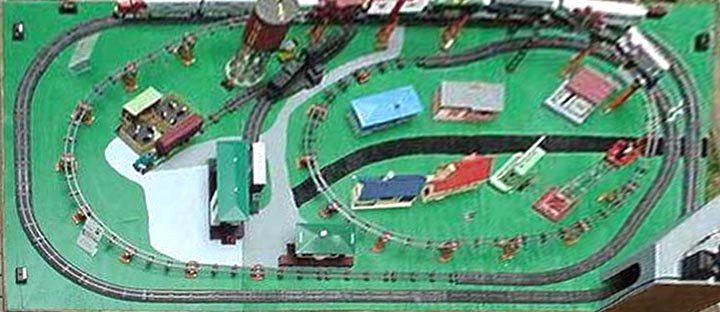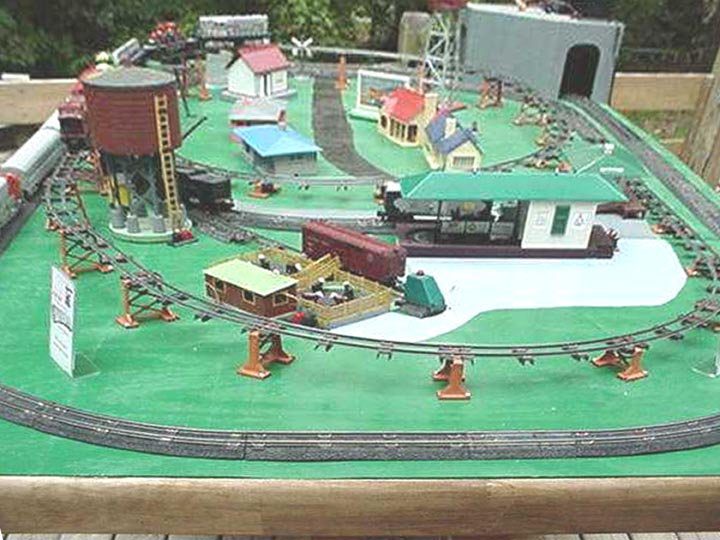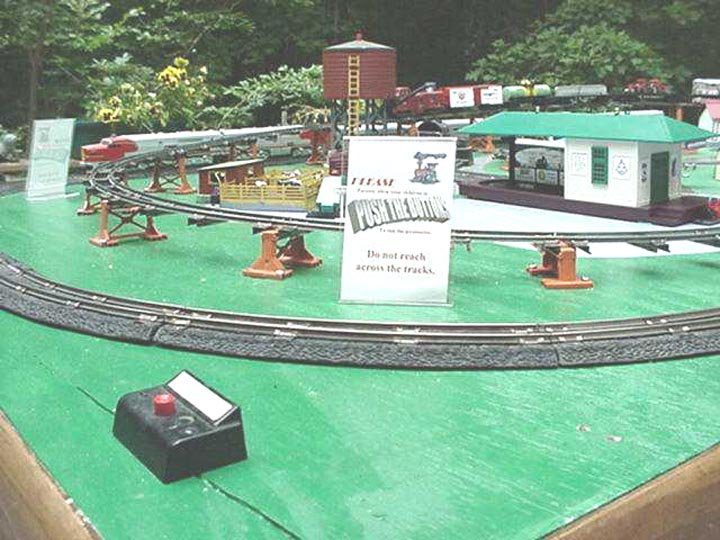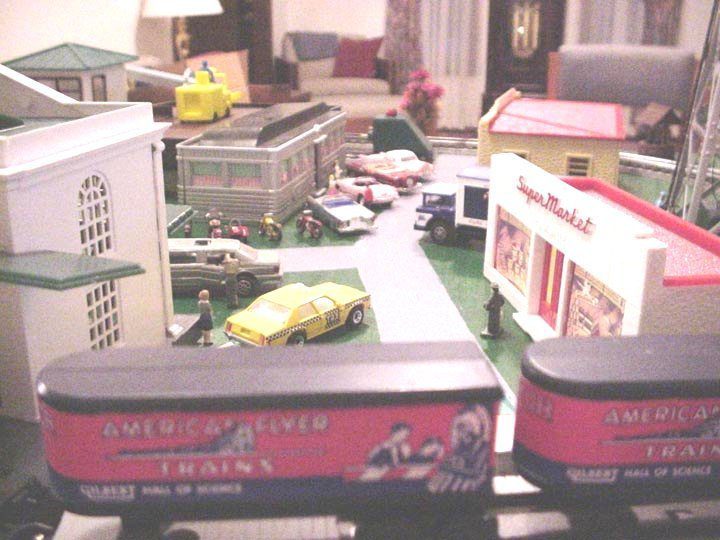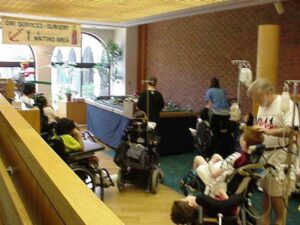Running American Flyer trains for Children’s Hospitals
By J. Wayne Beachy
Our club, The Virginia Central Division of the Atlantic Coast S Gaugers (ACSG), liked to take our modular layout to the Children’s wards of local hospitals. There were, however, two major problems with doing that. One was that the children’s wards were always on the 7th floor and just getting the equipment there took much time and work. The second was we were only able to operate a couple of hours, at the most. So we would spend two hours plus setting up, a couple of hours running, and an hour or so taking down. Again, this was a lot of work to run for a couple dozen children. Therefore, the club decided not to do these shows anymore.
We would very much miss the excitement and enthusiasm of the children when we did run. I also hated the idea that the children would miss out on the fun of American Flyer trains. We had several stories from hospital staff, which showed running trains for these children helped in the healing process.
With that in mind, I began a search for plans for a smaller layout, one that would be easier to carry and set-up. I wanted as much “train action” as possible. I also wanted lots of operating accessories. Many in the ACSG are building modules with buttons that children and adults can push to operate the accessories themselves. So I decided to include that feature in the layout, also.
Bob Tufts is in the process of researching Gilbert factory layouts and sent me the drawing for a 5’X9’ layout that fit the bill perfectly. It had two loops. The outer one was an oval and the inner one a modified figure 8 over and under. The layout had two sidings with typical Gilbert accessories of the mid-fifties, plus other accessories such as beacon; floodlight; and water tank. I made one slight modification to the ovals and changed the location of the sidings. A major change was to remove the switch from the inner oval that goes to the sidings. I did not need this, as I do not plan to do any switching. The siding merely stubs up to the oval and gives the appearance of a switch.
The train board was cut into three equal sections of 36” X 60”. A light frame of 1 X 2s was built under each section to make handling easier. These three board sections are set on a telescoping “L” girder style frame built from 1 X 4s with folding legs attached. For transportation the two “L” girder frames come apart. When set-up, they telescope together and are held together by 4 short carriage bolts. The board sections are also secured to the “L” girder frame by one carriage bolt for each section. Finally, I used plastic conduit secured by a conduit bracket at each corner, and one in the center on each side of the table to help stabilize it when children lean on the table. The plastic conduit sections slide out of the brackets for transportation. The table height is much lower than normal modular layouts, about 30”. This makes it easy for children, especially those in wheelchairs, to see the action and push the buttons.
The board is painted dark green and roads painted black, gray, or brown. This gives it more of a feel of 1950s toy train boards. The outside edges were trimmed with wood molding, stained, and glued to the boards. Skirting is tacked to the backside of this board during a show.
Track work is all set in current reproduction rubber roadbed for looks and to quiet the operation a little. It is all mounted permanently using Gargraves screws, with the exception of the elevated track work on the centerboard. I set this up each time I operate the layout. The elevated track work on the two outside boards, are permanently mounted.
Accessories were placed around the layout in such a way that visitors on all sides can see and play with them. I used a mixture of vintage and current production accessories. The goal here was to have accessories that work well, not display ones that have great antique value. Currently the layout has a Gilbert cattle loading facility, (yes, I know the cattle do not load well, but the visitor can push the button, and watch the cattle run around), a Gilbert operating water tank, a Lionel operating freight station with all vestiges of Lionel replaced with signs promoting S gauge, a Gilbert whistling billboard, a RapidRail operating diesel horn shed, and a RapidRail talking Plasticville station. There is also an operating MTH beacon light and Gilbert grade crossing warning signal that run continuously. Future plans call for a Gilbert “cow-on-the-track”, and to replace the talking station with a baggage smasher the kids can operate, as soon as either MTH, or Lionel make one that is reasonably priced. The remainder of the board is filled with Plasticville, based on however the mood strikes me.
To avoid taking an extra table on which to place the transformers, I built a wood tunnel for one end that would double as a transformer platform. This raises the transformers up a little to make operation easier since the table is only 30 “ high.
I use two MTH 750 transformers to operate the trains. These give plenty of power for the trains and allows me to operate sound. The newer MTH units will not work with S gauge since MTH seems making ones that only with work with O gauge. Too bad. I use two Gilbert 4B or larger transformers to operate the accessories, one under each end of the table. I made sure no operating accessories would be set on the centerboard. This simplified setting up at a show. I use quick-connect plugs to make all wiring connections under the table. On the tabletop I mounted speaker terminals into which wires from the accessories are inserted. This makes set-up much faster and kids don’t mind the detraction of the terminals on the tabletop.
I usually run vintage Gilbert Flyer or modern Lionel Flyer trains as they are better able to take abuse than other modern hi-rail S gauge cars like SHS or AM. I save those to run on my home layout. I always make sure the hospital has no objection to the volumes of smoke Gilbert engines produce before I start operation.
This is a very worthwhile project. Already for 2003, I have scheduled shows at the children’s ward of a nearby general hospital (or medical center as they now call themselves), Richmond Children’s Hospital, and the local VA hospital. I later plan to offer this to the one public nursing home in the area.

